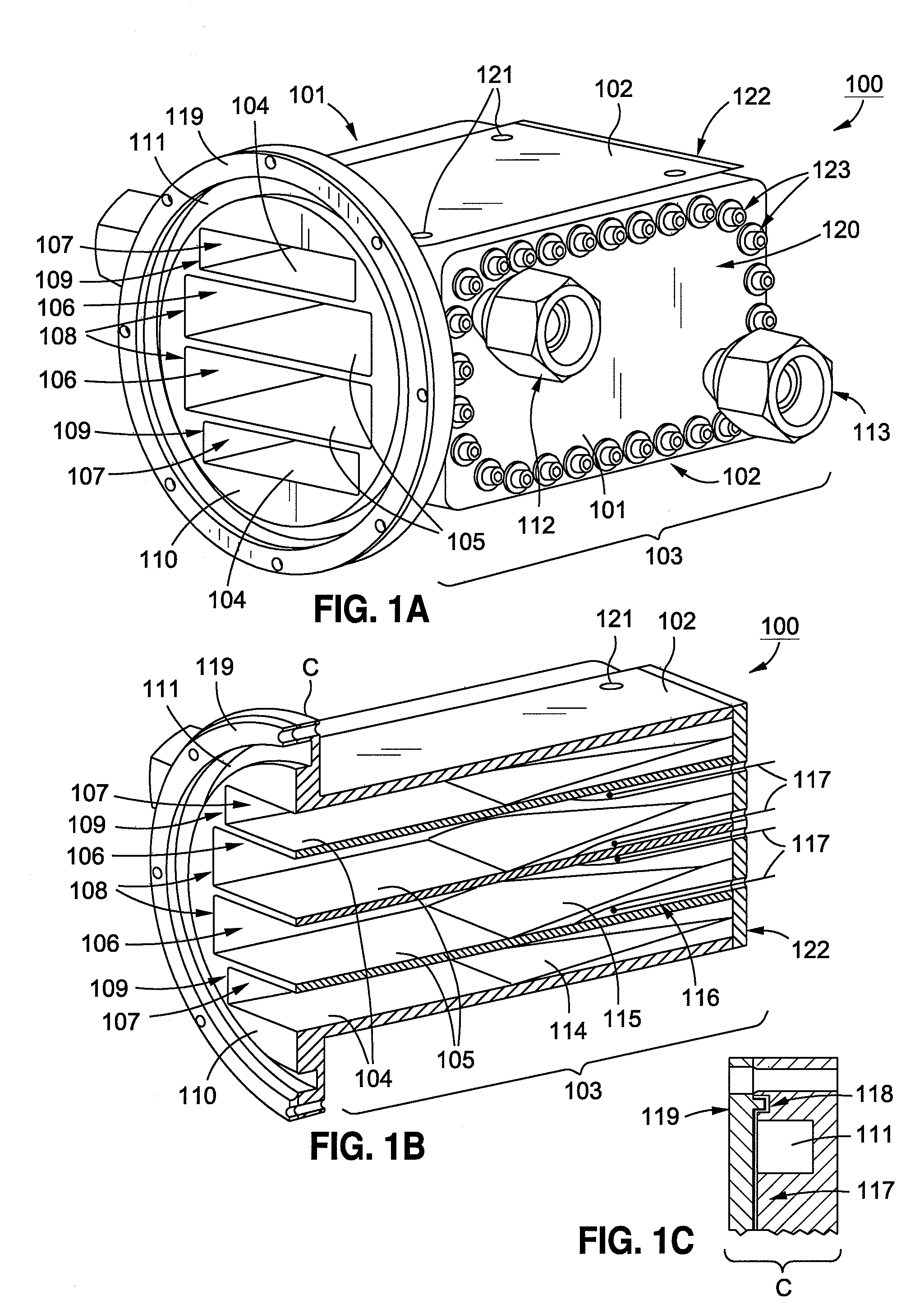Generic pick-up horn for high power thermal vacuum testing of satellite payloads at multiple frequency bands and at multiple polarizations
a generator pick-up horn and high-power thermal vacuum technology, applied in waveguide horns, instruments, measurement devices, etc., can solve the problems of affecting the accuracy of payload testing, slow approach, and inability to test payload operations at full power in vacuum environmen
- Summary
- Abstract
- Description
- Claims
- Application Information
AI Technical Summary
Benefits of technology
Problems solved by technology
Method used
Image
Examples
Embodiment Construction
[0035]In the following detailed description, numerous specific details are set forth to provide a full understanding of the present invention. It will be apparent, however, to one ordinarily skilled in the art that the present invention may be practiced without some of these specific details. In other instances, well-known structures and techniques have not been shown-in detail to avoid unnecessarily obscuring the present invention.
[0036]The present invention provides systems, methods, and apparatus that utilize one or more pick-up horns for use during high-power thermal vacuum testing (TVAC) of a spacecraft payload. Such spacecraft payloads can include various transmitting antennas operational over communications bands including those used for satellite to ground communications links. The payload antennas can include those operating in various microwave regimes including, but not limited to, X-band, Ku-band and Ka-band; other frequencies and bands may also be accommodated. The payl...
PUM
| Property | Measurement | Unit |
|---|---|---|
| power | aaaaa | aaaaa |
| boiling point | aaaaa | aaaaa |
| temperature | aaaaa | aaaaa |
Abstract
Description
Claims
Application Information
 Login to View More
Login to View More - R&D
- Intellectual Property
- Life Sciences
- Materials
- Tech Scout
- Unparalleled Data Quality
- Higher Quality Content
- 60% Fewer Hallucinations
Browse by: Latest US Patents, China's latest patents, Technical Efficacy Thesaurus, Application Domain, Technology Topic, Popular Technical Reports.
© 2025 PatSnap. All rights reserved.Legal|Privacy policy|Modern Slavery Act Transparency Statement|Sitemap|About US| Contact US: help@patsnap.com



